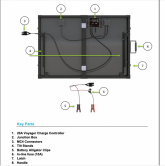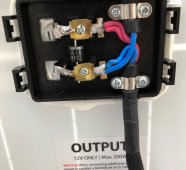Interested if anyone has successfully converted their Solar Suitcase from (factory) wired in parallel to series in order to increase the voltage?
I'm trying to charge a solar generator which requires a minimum of 35V. Currently the 200W solar suitcase provides a mere 21.2 Voc as it's factory wired in parallel.
I don't wish to make the change permanently however, as I would like to use it for charging my batteries as well. Interested in someone offering their successful wiring diagram (with parts required) for this changeover. Thanks
I'm trying to charge a solar generator which requires a minimum of 35V. Currently the 200W solar suitcase provides a mere 21.2 Voc as it's factory wired in parallel.
I don't wish to make the change permanently however, as I would like to use it for charging my batteries as well. Interested in someone offering their successful wiring diagram (with parts required) for this changeover. Thanks





